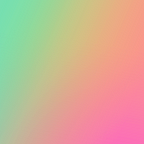Color Outside the Coloring Book Mindset
Notes on Contour and Color from the Artist of Even the Ocean
Since childhood, I’ve always been more attuned to contour (depicting objects with the outlines of their form — line drawing) over color and form. Instead of fun and vibrant “kid art”, I offered ambitious-yet-drab pencil drawings in Thank You and birthday cards. I think in my mind, contour was the foundation of art, and color was a secondary feature, a decoration — and indeed, this is how many art processes seem to work!
For me it’s been a continual journey to realize that things don’t necessarily have to go in that order. In fact, this sort of “coloring book” mindset can actually make it more difficult to create satisfying images with color, even though it may seem like the most obvious process.
The problem with viewing color as just the “next step” after line art is that it doesn’t leave room for developing and getting to know the colors. You might end up just staring at your line drawing and thinking …where do I start?? If you’re like me, the random decisions you make flailing about in this situation will be often turn out formulaic or ugly!
So let’s push aside my preconceived notions and give our coloring process some space to breathe! How do we start exploring color? One idea I had during a project was to paint with colors picked from a friend’s old childhood photographs (most digital art programs have a color picker or “eyedropper” tool that let you paint with any color you click on in an image). When you take a photograph, you capture forms that exist under shared lighting conditions. The physical nature of cameras/film/printing also creates a limited or filtered image of “reality” (think of how popular #filters mimic old photos). These elements can add a sort of “built-in” cohesiveness to an image (of course, photographers can also intentionally frame nice color compositions!).
When you’re working digitally, you can pick colors from any digital image! But how to decide what to do with those colors? Perhaps you can try to arrange them into a palette to get an understanding of your reference image’s gamut (useful: James Gurney’s gamut masking concept, which I mentioned in my previous post)! Then when you create something new, you’ll have a frame of reference for how to use the colors you’ve chosen.
You can also collage digital images directly into your work, which allows you to work on shapes and color in a very intertwined manner!
You can also start without source images, either with gamut masking or just messing around! And at any point along the way you can be applying curves adjustments or other filters to get closer to the mood you want to inhabit.
Through all this, perhaps we can start to get an idea of some alternate mental framings for creating images with color:
“Hate the colors.” — first comment on a NeoGAF forum post about my game Anodyne
Why should I of all people be writing to you about colors? There are so many people far more qualified! Well I think that learning, like visual art, is a non-linear process. It’s a wide world out there and people have diverse needs and interests. If you’re like me and find color overwhelming, perhaps something in here might function as a small stepping stone in your hike through art/life. There are many other resources out there. Don’t be bogged down by the “correct” way to do everything — but when you are hungry, seek out sustenance.
Thanks for reading! If you enjoyed this post, consider subscribing to my newsletter or following me here on medium or on twitter! To interactively explore my landscape painting, play Even the Ocean!
